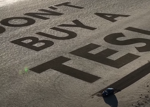By Professor Jim Saker
At the recent AM Used Car Conference, I was asked to predict likely changes in sales culture and customer service in our sector.
Over the past 20 years, change in automotive retail has been slower than the radical disruptions taking place in other retail sectors. Over the past few months, it has been interesting to watch the discussion between online and High Street retailers over the speed of delivery. It appears how quickly an order can be processed and delivered is becoming a competitive metric of success in that area.
Of all the management mantras, one of the most pervasive states: “What gets measured gets managed.” Whether it is hospital waiting lists, same-day delivery or car emissions, the things we are asked to measure, and are therefore judged by, are the things on which we inevitably place great emphasis and have a tendency to manage.
The difficulty comes when the measures that we manage lead to behaviours and cultures that do not benefit either our customers or our business.
“The problem is you either measure what you value or you end up valuing what you measure, and that may not be the best thing for your business”
I have argued for years about the problems and negative behaviours generated in measuring customer satisfaction. Satisfaction is a poor measure of repurchase intention. It leads to behaviours by the organisation doing the measuring that appear to be more about getting a customer to answer a questionnaire in a particular way than about giving excellent service in the first place.
In previous articles, I have listed the type of attempts dealers make to try to encourage the customer to tick a box saying ‘completely satisfied’. The problem with that is you either measure what you value or you end up valuing what you measure, and that may not be the best thing for your business.
Most successful businesses aim to build relationships with customers in such a way that they will return for products or services.
There have been many studies looking at the cost of retaining customers over the cost of having to conquest new ones, with the latter estimated to cost anywhere from three to 10 times more. Retention makes business sense – we should be striving to achieve this as opposed to measuring satisfaction that has little or no connection with loyalty.
How does online retailing change things?
During the conference, a question came from the floor on whether online car retailing involves relationship-building or whether we are moving to a more transactional approach to purchase.
Undoubtedly, the use of the internet and digital marketing changes the nature of the interaction between the buyer and the seller. However, there is still a relationship there – we do not buy from websites we don’t trust. The
interaction between the site and the person regarding speed and quality of response leads us to have sites that we prefer over others.
We also interact with third parties, looking at recommendations of others through ‘likes’ on sites such as Trip Advisor. The interaction is different, but there is still a relationship and level of engagement.
Bridging the digital-physical gap in sales experiences
Over the past few years, digital marketing has started to come to terms with targeted relationship-building as opposed to simply bombarding people with junk emails. This type of communication reinforces the relationship that we have with brands generally.
The issue is that the internet does not stop the process of relationship management – it simply changes its nature. Perhaps the easiest example is when people make the distinction between their ‘friends’ and their ‘Facebook friends’. We have a relationship with both groups of friends, but the interaction is often different and potentially the depth of the relationship will differ between the groups.
Historically, relationships in the car industry have been built face to face. The challenge today is being able to build commercial relationships that are instigated online, but have the capacity to take alternative routes based on the preference of the customer. One customer may want to progress the whole buying process online while others may want to interact face to face at different stages in the process.
The ability to do this requires not only flexibility, but also a level of sophistication from staff in understanding where the customer is in the relationship-building process.
Rockar continues to attract attention for the alternative way it interacts with customers in a non-threatening digital environment, coupled with an equally non-aggressive face-to-face experience. The ability to offer a digital channel that builds a virtual relationship, which then morphs into a ‘physical’ encounter with both people and the product seems to be a first step in this direction.
This type of approach will affect both the sales culture and the type of customer service that will be expected. It will lead to a rethink of the type of staff required and the reward systems employed. It will also lead to a reappraisal of how the process is measured and, therefore, how it is managed.

















Mark Benjamin - 02/12/2015 13:11
Jim, I totally agree. The automotive retail industry (like many other Performance Managed businesses ) focuses too much on end-result metrics, not the quality of the processes that lead to them..